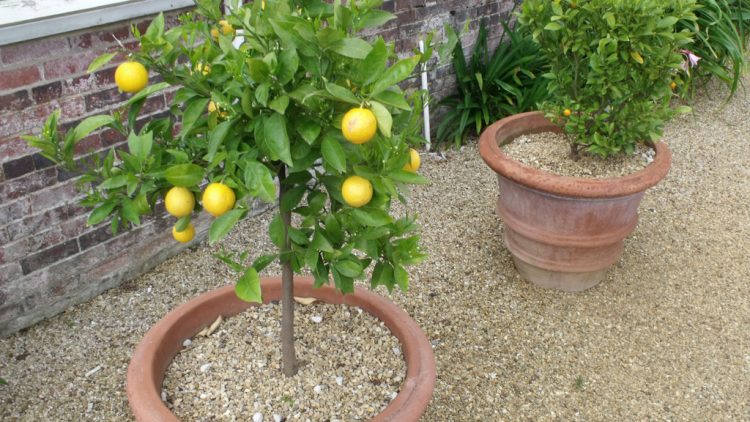Growing Lemon Trees in Arizona
GROWING LEMON TREES IN ARIZONA
GET A FREE ESTIMATE TODAY!
Arizona is a wonderful place to grow citrus plants, which is why so many home owners and commercial growers are producing such high quality citrus fruits. You really can grow some of the best citrus in the world in Arizona’s warm and dry climate. Oranges, Blood Oranges, Tangelos, Grapefruits, Tangerine, Lemons, Limes, Kumquats, Pumelos, and mandarins are just some of the citrus varieties that can thrive in Arizona. While there is a large array of available citrus to grow, we are going to focus on lemons and how to grow them effectively.
WE WILL OUTLINE TIPS AND INFORMATION ABOUT VARIOUS ASPECTS OF GROWING STRONG, HEALTHY AND FRUITFUL LEMON TREES.
GROWING LEMON TREES OUTDOORS
The first and most important decision when it comes to planting your lemon trees is the location you want to plant them and the available sun exposure. Being that lemons are more sensitive to cold temperatures, which is why giving them full sun exposure is ideal and necessary for lemon trees to grow adequately. You will find the best sun exposure spots on the south side of your home most times, depending on any coverage from large trees that may be present. While not a big problem in Arizona, frost can be devastating to lemon trees and a good way to mitigate any risk is to plant the lemon trees close to your house.
WATERING YOUR TREES
Making sure that the tree is moist when you are planting it is extremely important, but after planting you should ideally water your plant in a slow and deep fashion one time a week during the summer months and two times a week the rest of the year. The reasoning for this is citrus trees and plants that are established in the soil do well when the soil is slightly dry between watering sessions.
GENERAL CARE AND PROTECTING AGAINST FROST
If you know there is a chance for frost to develop, you should cover you young lemon trees. Burlap and frost cloth are great for protecting your lemon trees. Never use plastic to protect you citrus from frost as it is vastly inadequate, so if you don’t have burlap or frost cloth a sheet or blanket will protect your citrus well. Once temperature rise above freezing again, uncover your plants and allow them to soak up sunlight until the temperature drops again. A good way to help cold sensitive citrus such as lemons and limes is to grow them in pots on your patio. They can still flourish and produce fruit when potted. This method is effective because you can bring you pots under the patio cover or even indoors when it starts freezing outside.
FERTILIZATION METHODS
The best method of fertilization for lemon trees is to fertilize three times annually, ideally in February, May and September. Slow release, organic fertilizers are the best way to go.
SOIL FOR LEMON TREES
Lemon trees adapt extremely well to desert soil to the extent that they can thrive in soil dug up from your yard, so long as the soil isn’t too rocky. A good way to keep the roots of your tree moist is to lay down a layer of mulch that is several inches thick that runs out to the drip line used for watering. If you do have rocky soil you can mix mulch at a ratio of 70%/30% which will greatly enhance your lemon trees ability to soak up nutrients and thrive.
While these citrus plants can readily adapt to almost any kind of soil, lemon trees prefer soil that is slightly acidic and well drained. This preference for well drained soil lends itself to planting lemon trees slightly above ground level. This can be done by digging a shallow hole that won’t engulf the entire root ball on the bottom of the tree. Replacing the soil and adding mulch will create a near ideal environment for your lemon tree to flourish.
SUN EXPOSURE AND HEAT
Citrus plants require a lot of sunlight in order to produce fruit and high temperatures are the key to your plants producing sweet fruits. This is especially true for lemon trees. If you prune your trees in order to expose the trunk, you should consider wrapping the trunk or painting it white in order to prevent it from suffering from sun burn. If you are going to go the paint route, use tree paint or dilute household paint with 50% water. Speaking of sun damage, seeing some leaf scorch toward the end of long and/or hot summers is perfectly normal and should not be seen as a red flag. This scorching will be more apparent on younger lemon trees, which can be avoided by shading your younger trees during the hottest months. This is a helpful measure, but is by no means necessary.
GROWING LEMON TREES INDOORS
As mentioned earlier, lemon trees can thrive when they have been potted. This lends them to being great plants to grow indoors. The same principles that apply outdoors apply to indoor lemon trees when it comes to having your plant in an environment that can be well drained and has room for adequate growth of the tree along with having a slight acidity in the soil. Indoor lemon trees usually max out at a height of about 5 feet.
You need to make sure your indoor lemon trees receive plenty of sunlight as they need a full day’s worth in order to grow to their full potential and to produce quality fruit. You can place your trees outdoors during the warmer times of the year; bringing them back in overnight or once the weather starts to shift back to colder temperatures. Doing this will help them produce fruit as they will get into a more natural rhythm with day and night cycles. Placing them outdoors will also allow your lemon trees to be pollinated by bees.
BEST LEMON TREE TO GROW IN ARIZONA
The lemon tree species that adapts the best to the AZ climate is the Eureka Lemon Tree. These trees produce lemons with great acidity that possess very few seeds. The lemons also hold onto the tree very well, which means they won’t be falling off your tree and littering your floor.
LISBON LEMON TREES – Lisbon Lemon trees also produce great lemons and acclimate well to Arizona’s desert climate. They grow well during the desert winters.
MEYER LEMON TREES – Meyer Lemon trees are a dwarf variety the looks like shrubbery due the green foliage they produce. The sugar level of the lemons makes them a favorite of chefs.
PINK LEMONS – Pink Lemons also grow well in the AZ desert climate and add an aesthetic twist with their white and light green foliage.
CITRUS & LEMON TREE TRIMMING
If you’ve got a citrus or lemon tree our team offers professional trimming and pruning services. We will help ensure you get the best quality of lemons, oranges, limes, or other fruit possible. We know tree varieties intimately and how to care for them properly in the heat of Arizona. For more information about our fruit and citrus tree trimming please give us a call.


